#wingtober
Photo

Wingtober Day 13: “Teeming”
The straw-colored fruit bat has the largest mammal migration on earth, with over 8 million individuals crossing central and southern Africa in search of fruit. They often make the 1,500 mile journey while pregnant or nursing.
40 notes
·
View notes
Photo
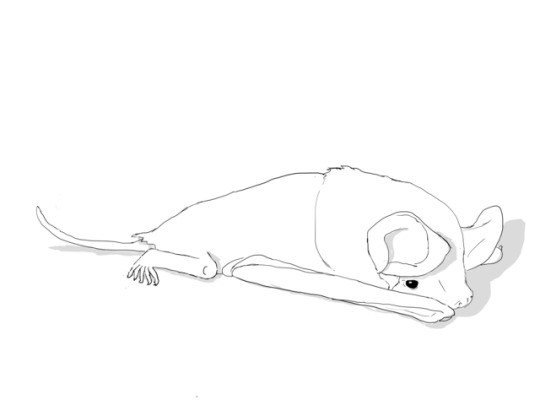
Wingtober Day 7: “Shy”
Playing a bit of catch-up, here... for day 7, I drew the endangered Florida bonneted bat.
26 notes
·
View notes
Photo

Wingtober Day 4: Underwater
Just squeaking in before midnight with this long-fingered bat, recently found to catch the occasional minnow to add to its diet. Evidence suggests that this behavior is learned, not innate.
27 notes
·
View notes
Photo
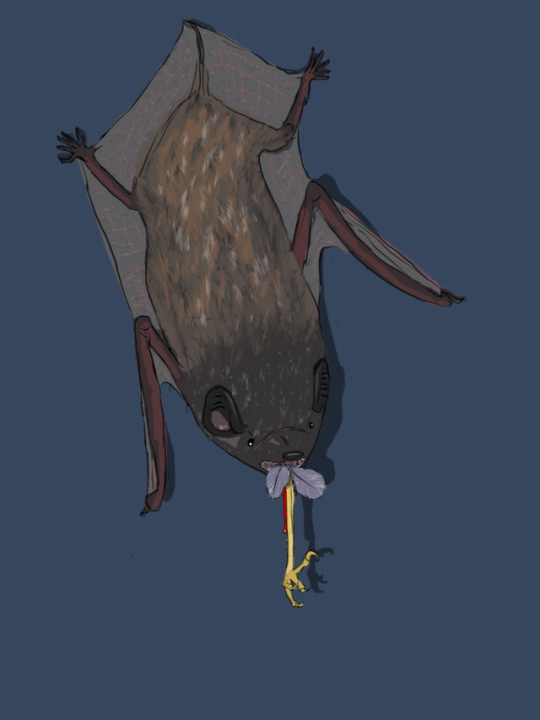
Wingtober Day 8: “Crooked”
A hungry great evening bat finishing up a snack on your dash.
19 notes
·
View notes
Photo
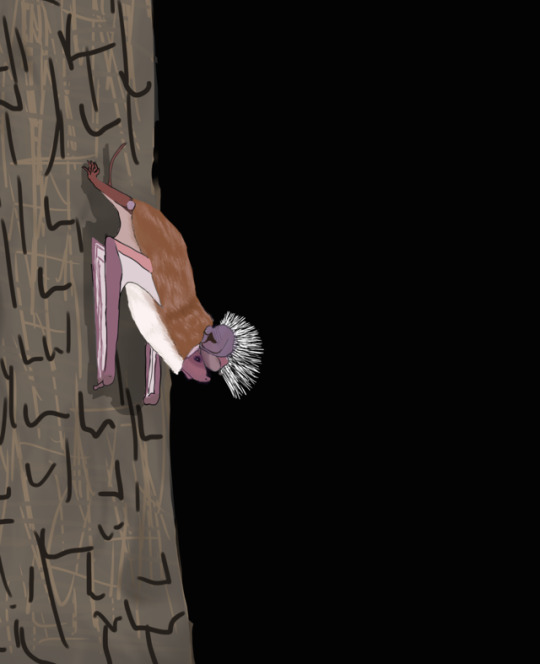
Wingtober Day 14: “Fierce”
Chapin’s free-tailed bat is very fiercely fashion-forward. Males in particular have bright white extendable ‘mohawks’ that they presumably use to signal to potential mates. (Nobody has observed this, but since females have far more modest hairstyles, it’s a good guess.)
Not only do these crests extend out bright white, they also waft strong scents from a special gland located on the back of the bat’s head. They probably also sing complex songs, as other male free-tailed bats do. If these bats have lekking behavior (like the hammerhead bat does, for example) I think a gang of displaying males would be quite a multi-sensory experience to behold...
(Don’t make fun of how I gave up on drawing the tree bark please.)
18 notes
·
View notes
Photo
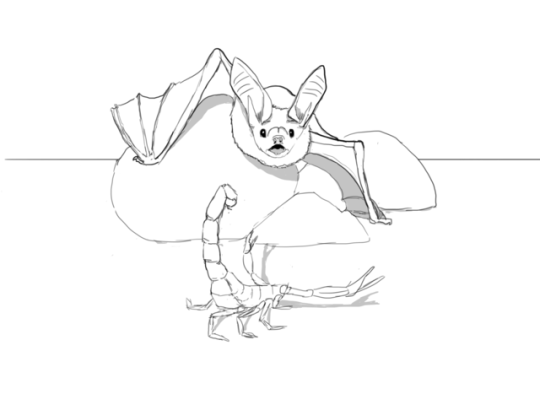
Wingtober Day 11: “Run”
When pallid bats hunt scorpions, they choose to scuttle along the ground after them rather than take them on the wing. They’ve got a strong resistance to scorpion venom, but it still seems to hurt a lot. Really an impressive match-up, given the relative sizes of predator and prey.
18 notes
·
View notes
Photo

Wingtober Day 12: “Shattered”
The Christmas Island pipistrelle, a thumb-sized bat endemic to the island it was named for, was last heard echolocating August 26, 2009. After that, the calls went silent. The last member of the species was dead.
Some animals are killed with weapons. Others are doomed by committee. In January 2009, conservation biologists urged the Australian government to act and capture the estimated 20 bats remaining on the island. Instead, the government formed a committee that decided (despite prior successful breeding of pipistrelles in captivity) that they would attempt to capture and breed a related species to test if it was possible. By July, there were only four individuals remaining; when the government finally decided to act and capture the remaining bats, the volunteers only heard a single echolocation call- which eventually faded away.
17 notes
·
View notes
Photo

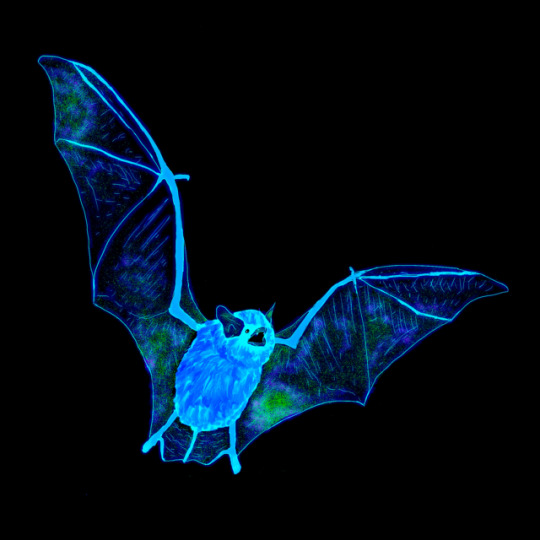
Wingtober Day 3: Poison
A little brown bat under UV light, first healthy and then infected with white-nose syndrome. I wasn’t prepared for how emotional adding the “disease” to the drawing would make me.
22 notes
·
View notes
Photo
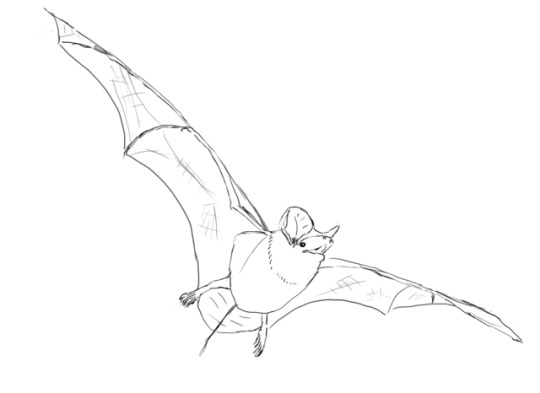

Wingtober Day 1: Swift
Hi! Remember this blog? I decided to dust it off for another month of practicing how to draw bats. Instead of inktober, it’s gonna be #Wingtober! ...I’m starting a day late, ok.
The first prompt was “swift,” so where better to start than with our old friend the Brazilian free-tailed bat, the fastest horizontal flying vertebrate? Check out those long, narrow wings!
18 notes
·
View notes
Photo

Wingtober Day 6: “Sword”
Nothing fancy for today, just a plain ol’ Lonchorhina aurita.
15 notes
·
View notes
Photo
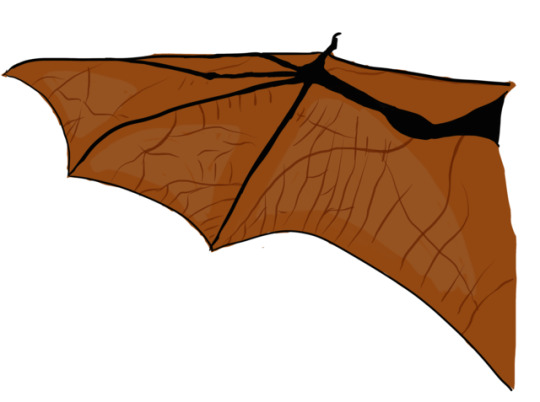
Wingtober Day 10: “Gigantic”
Which species of bat is the largest depends on who you ask (personally, I think several of them are tied) but google suggests that the official answer is the giant golden-crowned flying fox, which can have up to about a six-foot wingspan and weigh up to two pounds. Not bad, really.
I drew the wing of this magnificent megabat and decided to stop there- speaking of gigantic things, it always blows my mind that a bat’s wing is nothing more than a gigantic hand. Even some of the littlest bats have longer fingers than I do!
11 notes
·
View notes
Photo

Wingtober Day 9: “Screech”
Aaaaaah almost caught up- I accidentally did tomorrow’s drawing today so I’ll post it tomorrow along with the prompt for today! Anyway, here is the greater bulldog bat, the bat with the loudest recorded call (as of now) at 140 decibels. That is the equivalent of having a shotgun go off next to your ear. Luckily, their calls are too high-pitched for us to hear, otherwise they could actually damage our hearing.
Why so loud? Well, there’s a trade-off to echolocation: higher-pitched noises are able to bounce off and detect smaller objects (think of it as a sound ‘net’ with smaller holes), but they don’t travel as far. Bats with extremely high-pitched cries compensate by just being real dang loud. Just real loud. So loud that the bat’s ears auto-disable their own hearing when the bat is calling, because their screaming is a hazard to themselves.
The interesting thing about the greater bulldog bat is that it mainly hunts fish, not insects. Most bats with very high calls hunt very small insects like gnats, which is why they need that finer sound net. Fish are much bigger than gnats, so why the excruciatingly high screeches? (It’s not even physically possible for these guys to catch tiny insects, with their huge feet and shortened patagium adapted for fishing!) The current theory is that the bats use this very fine-tuned echolocation for detecting tiny ripples on the water that indicate fish are near the surface. They’re very lucky that the fish, like us, cannot hear their very noisy radar.
11 notes
·
View notes
Photo

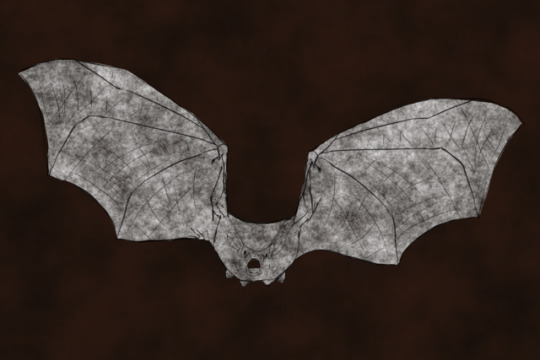
Wingtober Day 5: “Long”
A hard one to do, just like the little brown bat. Initially I thought I might pick a species with very exaggerated traits- there are a lot- but I couldn’t help thinking of the small, unspecialized Northern long-eared myotis. I caught many of these guys in 2012. They were classified as threatened due to white-nose syndrome in 2015. They’ve all but vanished from their northeastern roosts. It’s chilling, and I’m afraid they’ll be forgotten.
White-nose syndrome is an especially cruel disease, because it spreads via the social nature of bats. Only species that huddle close together in hibernacula are affected- and since many species do this in the thousands, it is able to rip through colonies that have been established for hundreds of years in a single season.
12 notes
·
View notes